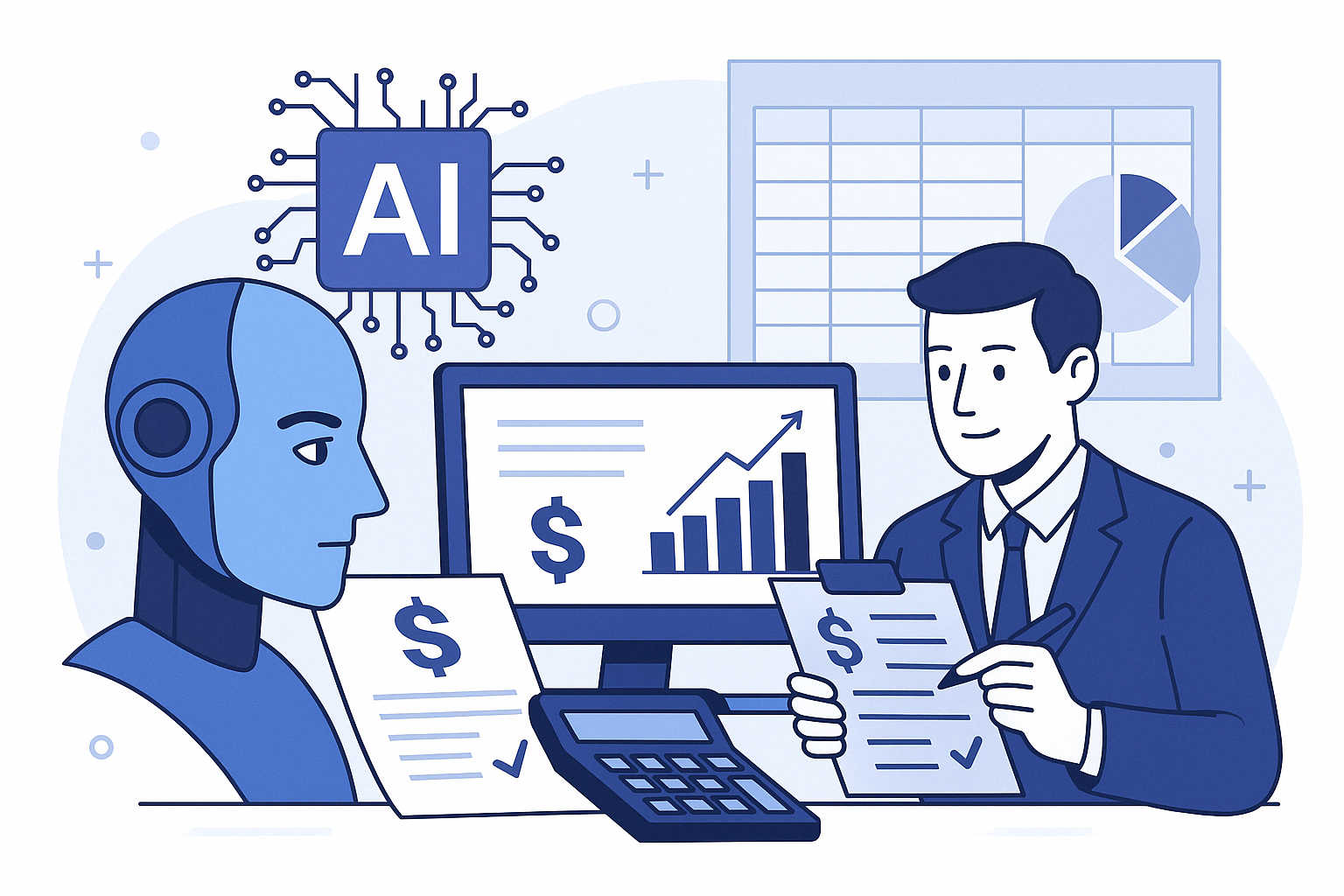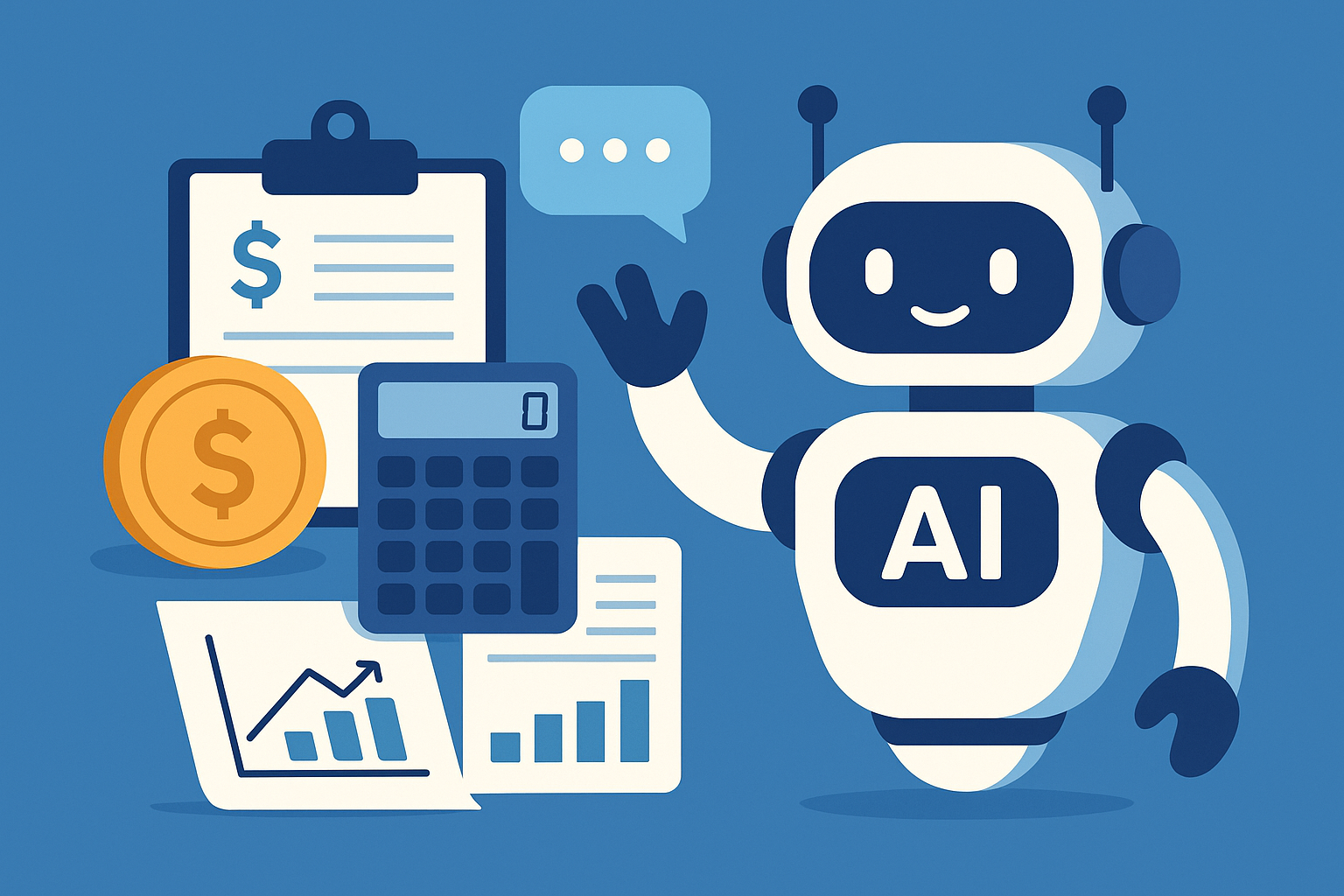The Power of AI in Modern Accounting
In the fast-paced world of finance, human error in accounting can cost companies thousands — sometimes millions — of dollars each year. Misplaced digits, missed transactions, or inaccurate reconciliations not only waste time but can also damage trust with clients and regulators.

Artificial Intelligence (AI) is changing that. By automating repetitive tasks, analyzing large datasets, and providing real-time insights, AI reduces human errors in accounting while freeing professionals to focus on strategic work. From startups to global enterprises like Deloitte, PwC, and QuickBooks, firms are rapidly integrating AI into their financial systems.
Why Human Errors Happen in Accounting
1. Repetitive and Manual Data Entry
Human accountants often spend up to 70% of their time entering or checking numbers. Fatigue, distractions, or time pressure can lead to mistakes. Even a single misplaced decimal can have cascading effects on reports and audits.
2. Complexity of Regulations
Tax laws, compliance standards, and accounting principles (like GAAP or IFRS) change frequently. Manually tracking and applying these rules increases the chance of oversight.
3. Multiple Data Sources
Modern companies pull financial data from CRMs, ERP systems, payment gateways, and more. Consolidating all this manually opens the door to discrepancies.
AI doesn’t tire, forget, or misinterpret rules — making it a reliable partner in preventing such errors.
How AI Reduces Human Errors in Accounting
1. Automated Data Entry and Validation
AI-powered software like Xero, QuickBooks Online Advanced, and FreshBooks use optical character recognition (OCR) and machine learning to extract data from invoices, receipts, and statements.
-
Scans documents automatically and fills in records
-
Flags inconsistencies (e.g., duplicated invoices or missing receipts)
-
Matches transactions with bank data in seconds
Result: less manual entry, fewer typos, and consistent data integrity.
2. Real-Time Anomaly Detection
AI systems monitor transactions continuously. When something doesn’t fit the expected pattern — like a payment to an unknown vendor or a sudden spike in expenses — the system alerts accountants instantly.
Example:
At JP Morgan Chase, the COiN (Contract Intelligence) platform uses AI to review commercial loan agreements, reducing analysis time from 360,000 hours to a few seconds. This same logic applies to anomaly detection in accounting.
3. Automated Reconciliation
Traditional reconciliation between ledgers and bank statements can take hours. AI automates the process:
-
Identifies unmatched entries
-
Suggests corrections
-
Tracks historical inconsistencies
With platforms like BlackLine or Trullion, businesses achieve near real-time reconciliation and reduce month-end closing time by up to 50%.
4. Regulatory Compliance and Audit Support
AI tools help maintain compliance by:
-
Automatically applying the latest tax rates and accounting rules
-
Maintaining transparent audit trails
-
Generating compliance-ready reports on demand
For instance, KPMG’s Clara platform integrates AI to support global audit processes, minimizing manual oversight and error risks.
5. Predictive Analytics and Forecasting
By learning from historical data, AI predicts potential anomalies and cash flow gaps before they occur. This helps financial teams correct course early.
Use case:
A retail chain using SAP S/4HANA Finance reduced manual forecasting errors by 28% after implementing AI-driven predictive analytics.
Practical Steps to Implement AI in Accounting
Step 1. Identify Error-Prone Processes
Start small. Target areas like invoice matching, data entry, and expense categorization. These yield fast ROI and quick error reduction.
Step 2. Choose the Right Tools
Compare solutions such as:
-
QuickBooks Online Advanced — for automated bookkeeping
-
BlackLine — for reconciliation
-
Botkeeper — for AI-based transaction categorization
-
Zoho Books — for small business automation
Evaluate each based on scalability, integration with your ERP, and data security.
Step 3. Train Your Team
AI doesn’t replace accountants — it empowers them. Encourage your team to learn how to interpret AI outputs, verify anomalies, and continuously refine models.
Step 4. Ensure Data Quality
AI is only as good as its data. Before deployment, clean your financial records, remove duplicates, and standardize formats.
Step 5. Monitor and Adjust
Use built-in dashboards to measure accuracy improvements and error reduction over time. Review quarterly performance to fine-tune the system.
Common Mistakes When Using AI in Accounting
-
Overreliance on Automation
AI can flag issues, but humans must verify them. Always maintain a layer of review before submitting official reports. -
Neglecting Data Security
Sensitive financial data must be encrypted and comply with GDPR, SOC 2, or ISO 27001 standards. -
Ignoring Change Management
Employees may resist automation. Provide clear communication and training to ensure adoption. -
Failing to Integrate with Existing Systems
Standalone AI tools without integration often create data silos — the very issue automation is meant to solve.
Real-World Case Studies
Case 1: Hilton Hotels
Hilton adopted AI-driven accounting software to automate invoice processing across multiple regions. Result: 98% accuracy in document matching and 40% faster month-end closures.
Case 2: Rakuten Group
Rakuten’s finance department uses AI to identify irregular spending patterns and prevent fraud, saving the company an estimated $5 million annually.
Case 3: Deloitte AI Practice
Deloitte’s “Argus” platform uses machine learning to analyze contracts and expense reports, cutting manual review time by 70%.
The Human Side of AI Adoption
While AI enhances accuracy, the role of the accountant evolves. Instead of manual entry, professionals now interpret results, design strategies, and ensure compliance.
The future accountant is part analyst, part data strategist — empowered by AI to make better, faster decisions.
Author’s Insight
Having implemented AI-assisted bookkeeping in my own consulting projects, I’ve seen firsthand how automation transforms workflows. What once took teams three days — invoice matching, reconciliation, and report preparation — now takes less than an hour with QuickBooks AI and BlackLine integration.
But the biggest advantage isn’t just fewer errors. It’s confidence. Financial data becomes a reliable decision-making tool, not a source of stress or uncertainty. The human accountant doesn’t disappear — they become more valuable.
Conclusion
Artificial Intelligence is redefining accounting by reducing human errors, ensuring data accuracy, and enabling faster decisions. From automating data entry to detecting anomalies and improving compliance, AI tools are now essential in every finance department.
Adopting AI in accounting isn’t just about technology — it’s about transforming accuracy, efficiency, and trust in financial management.
In the end, AI doesn’t replace accountants — it empowers them.






